12th Operations Group
| 12th Operations Group | |
|---|---|
|
Emblem of the 12th Operations Group | |
| Active | 1941–1946; 1947–1948; 1950–1952; 1991–present |
| Country | United States |
| Branch | United States Air Force |
| Type | Training |
| Part of | 12th Flying Training Wing |
| Garrison/HQ | Randolph Air Force Base |
| Nickname(s) | "Earthquakers" |
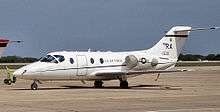
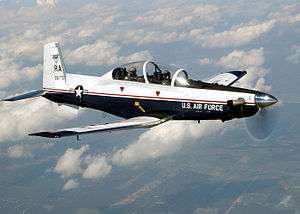
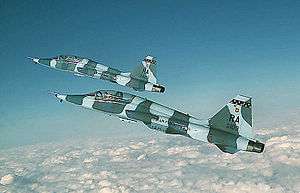
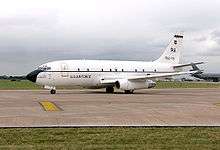
The 12th Operations Group (12 OG) is the flying component of the 12th Flying Training Wing, assigned to the United States Air Force Air Education and Training Command. The group is stationed at Randolph Air Force Base, Texas.
Overview
The 12th Operations Group is primarily responsible for conducting joint and allied pilot instructor training as well as Air Force and Navy undergraduate combat systems officer training at Randolph AFB.
The unit's main missions include T-6, T-38C and T-1 aircraft instructor pilot training, combat systems officer training and fighter fundamentals student pilot instructor training in the AT-38C.
Components
The group contains seven squadrons (Tail Code: RA):
- 12th Operations Support Squadron
- 99th Flying Training Squadron T-1A Jayhawk Instructor Pilot pilot training
- 435th Fighter Training Squadron T-38C Talon Introduction to Fighter Fundamentals
- 558th Flying Training Squadron Undergraduate RPA training
- 559th Flying Training Squadron T-6A Texan II Instructor Pilot pilot training
- 560th Flying Training Squadron T-38C Talon Instructor Pilot pilot training
History
- See 12th Flying Training Wing for additional history and lineage information
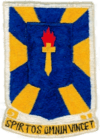
The 12th Bombardment Group (Light) was activated on 15 January 1941 and Prior to the United States’ entry into World War II the group trained with Douglas B-18 Bolo, B-23 Dragon, and Boeing Stearman aircraft at McChord Field, Washington. They were the only Air Corps combat unit on the Pacific Coast north of the San Francisco Bay area after the Japanese attack on Pearl Harbor and they immediately began flying anti-submarine patrols and watching for signs of an invasion
In February 1942, the group was redesignated the 12th Bombardment Group (Medium) and moved to Esler Field, Louisiana, where it trained with B-25s for duty overseas. In June 1942, while in the United States for a conference with President Franklin D. Roosevelt, British Prime Minister Winston Churchill received word that the British Eighth Army had been badly defeated in a tank battle with Field Marshal Erwin Rommel's Afrika Korps near Tobruk, Libya, and was in full retreat back toward the Egyptian delta area. He immediately made an urgent plea for military aid to help stop Rommel from over-running Egypt and the Arabian oil fields.
Western Desert Campaign


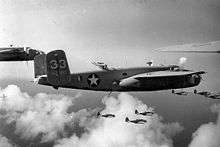
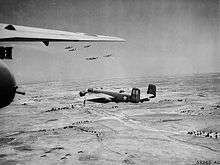
As a result, the ground personnel of the 12th Bombardment Group (Medium) sailed out of New York City on 16 July 1942 on the fast British troop transport HMTS Pasteur for a month-long cruise around South Africa, and up the Indian Ocean to Suez, Egypt, arriving on 16 August 1942. During this time, the air crews of the 12th were flying their North American B-25 Mitchells from Morrison Field, Florida over the South Atlantic transport route to Egypt by way of Brazil, Ascension Island, across the hump of Africa to Sudan, and north to Egypt. The unit arrived in August, and were assigned to the USAAF Ninth Air Force.
As soon as they arrived in Egypt the group began training under the tutelage of a South African Air Force Boston (A-20) wing in desert warfare tactics and navigation. Once the air and ground crews were reunited – with two squadrons at RAF Deversoir and two at RAF Ismailia, about 15 miles apart on the Suez Canal – the 12th made rapid progress in its training and adapting to the new environment. After flying a few missions in combined 18-plane formations with the Bostons they made a substantial contribution to the defeat of Rommel's final effort to break through to the Suez Canal at the Battle of Alam Halfa on 31 August-4 September 1942.
In order to be immediately available for strikes requested by the 8th Army, advance parties consisting of the combat crews and a few essential ground personnel set up camp in the desert at Landing Ground 88 (LG 88), about 20 miles from the front lines, while the bulk of each squadron remained at their bases on the Suez Canal. The Battle of El Alamein began 23 October 1942, after a tremendous artillery bombardment, and the 12th Bomb Group operating from LG 88 began a week-long shuttle service of 18 ship formations, taking off or landing every daylight half-hour, attacking targets phoned in to 8th Army ALOs (Air Liaison Officers) attached to the Group. There was no rest for anyone as ground crews rushed to refuel, reload bombs and ammunition, and patch flak holes, in time for the next mission. By 4 November, the targets suddenly became mammoth columns of tanks, trucks and troops retreating to the west.
American forces under General Dwight D. Eisenhower landed in Algeria and Morocco, and were met by fresh German divisions from Europe that were also put under Rommel's command. The situation became desperate as they drove the Americans back through Kasserine Pass. To reinforce the badly shot up XII Bomber Command of Twelfth Air Force, the flight crews of the 61st and 62nd Bomb Squadrons of the 12th Bomb Group were dispatched immediately from RAF Gambut, Libya, to Berteaux Airfield, Algeria, where they were attached to the 310th Bombardment Group for rations and administration on 3 February 1943. These two squadrons contributed substantially to Rommel's defeat at Kasserine, and continued operating under the Twelfth Air Force until the fall of Tunis in May, when they were returned to the Ninth Air Force. After the fall of Tunis, the 12th was reunited at Hergla Airfield, Tunisia, and all of the personnel of its squadrons were together again for the first time since their advanced parties moved out into the desert eight months earlier.
Italian Campaign
After three months at Hergla while bombing Pantellaria and Sicily, the ground personnel of the 12th boarded LSTs at Tunis to Sicily, where they set up their first base in Europe at Ponte Olivo Airfield. The combat crews had flown over and had already set up their tents. Some very hot ground fighting was going on around Randazzo in northern Sicily and the 12th Group's aircraft picked up many flak holes and lost two ships before the town was occupied by the US Seventh Army. This was the last significant action of the 12th as part of the Ninth Air Force, which was transferred to England. The 12th was reassigned to the Twelfth Air Force.
About this time the 12th Bomb Group received word that it had been awarded a Presidential Unit Citation, "For outstanding performance of duty against the enemy in direct support of the British $th Army in the Middle East Campaign, from the Battle of El Alamein to the capitulation of the enemy forces in Tunisia, and in Sicily."
In August 1943, the group began operating out of Foggia Airfield, Italy until 22 January 1944. The 12th attacked German targets in support of the American Fifth Army, and in eastern Italy supporting the British Eighth Army, as well as hitting important enemy ports. From November until late January 1944, the 12th bombed aerodromes, docks, marshaling yards, bridges, and other targets in Italy, Yugoslavia, and Albania.
Burma Campaign
The 12th Bomb Group was relieved from combat operations in Italy in early February 1944, and ordered to proceed by British ship back through the Suez Canal and on to India to help the British Fourteenth Army repel a Japanese invasion from Burma at Imphal in a war threatening the whole subcontinent and the Indian Ocean. They arrived at Bombay on 12 March 1944, and after a four-day train trip to Calcutta and a day on a river boat to Dacca in eastern Bengal, the 81st and 82nd occupied a field at Tejgaon Airfield and the 83rd and 434th at Kurmitola Airfield.
The 12th was equipped with new B25Hs and B-25Js and flew its first mission as part of the Tenth Air Force, bombing Japanese supply dumps at Mogaung, Burma, on 16 April 1944. A similar situation to El Alamein existed where a couple of divisions of the British Army were surrounded by a Japanese force at Imphal, the gate way to India from Burma, and threatened British control of the whole sub-continent and the Indian Ocean. The British still controlled an airstrip, however, and the 12th were called upon to fly ammunition to the British troops, landing behind Japanese lines to unload the ammunition carried in their bomb bays. After three weeks of "ammo" runs, the British had defeated the Japanese invasion and prevented their invasion of India.
After some vicious fighting, the British captured Meiktila on 3 March and swept down the road to Mandalay, which was defended by 400-year-old Fort Dufferin complete with high thick walls and a wide moat. The 12th was called upon to bomb the fort on 9 March 1945, which they did successfully with 2000-pound bombs dropped from 200 feet by four Mitchells, followed by attacks from 6000 feet by another squadron, and a 35-ship blasting of the entire area of the fort to complete the job.
The last major mission of the 12th was an overnight where the crews spent the night under the wings of their B-25s at Rameree, near Rangoon, and took off the next morning to bomb Ban-Takli airfield north of Bangkok, Thailand after which they were reequipped with new Douglas A-26 Invaders and were still training when the war ended.
The combat crews flew the A-26s to Frankfurt, Germany, and the rest of the group waited at Fenny Airfield until they went to Karachi in December to return to the United States.
On return to United States in 1946, the 12th Bombardment Group was immediately inactivated.
Cold War
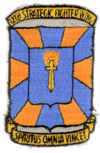
The unit was redesignated as the 12th Bombardment Group (Light) and activated on 19 May 1947 as part of Tactical Air Command. Although assigned to Langley AFB, Virginia, the unit was neither manned or equipped and was carried as an unassigned paper unit. It was inactivated on 10 September 1948.
The 12th Fighter-Escort Group was activated at Turner Air Force Base, Georgia, on 27 October 1950; assigned to the Strategic Air Command Second Air Force. Its mission was to fly fighter escort for Strategic Air Command B-50 Superfortress and B-36 Peacemaker strategic bombers. The group had three squadrons under its control (559th. 560th, 561st Fighter Escort Squadron).
SAC was founded by men who had flown bomb raids against Germany during World War II. They usually encountered swarms of enemy fighters and knew the importance of having fighter escorts, so they had fighter wings placed under their own operational control.
On 1 November the Group was assigned to the new 12th Fighter-Escort Wing when the Hobson Plan took effect. The 12th did not remain long at Turner as it was moved about a month later to Bergstrom AFB, Texas on 1 December to replace the 27th Fighter-Escort Group that had just departed for service in the Korean War. As the 12th arrived at Bergstrom, the unit received personnel from the 27th that did not deploy to Korea and also personnel that were reassigned from the 31st Fighter-Escort Group at Turner.
On 12 December the 559th Fighter Escort Squadron received their first three Republic F-84E Thunderjets, and would have received a fourth, but it crashed en route from Turner AFB to its refueling stop at Barksdale AFB, Louisiana. These aircraft, however, were rejected as Republic had equipped them with an engine rejected by SAC that was incapable of supporting the extended bomber escort missions projected by SAC.
During December 1950 – February 1951, the squadrons were assigned directly to the 12th Fighter-Escort Wing and the group was turned into a "paper unit" as part of the Air Force tri-deputate reorganization. It was inactivated on 16 June 1952 without personnel or equipment.
Modern era
The group was reactivated in on 9 December 1991 as the 12th Operations Group and assigned to the 12th Flying Training Wing as part of the "Objective Wing" concept adapted by the Air Force. The 12th OG was bestowed the lineage, honors and history of the 12th Tactical Fighter Group (which the group element of the 12th Tactical Fighter Wing had been redesignated in 1985, but never was activated) and its predecessor units.
The new Operations Group performed flight screening and undergraduate pilot training. Due to impending closure of Mather AFB, California, in 1992 group assumed undergraduate navigator training which was moved from Mather. Also, conducted specialized undergraduate pilot training. In 1995, began transition to joint navigator training.
Lineage
- Established as 12th Bombardment Group, Light, on 20 November 1940
- Activated on 15 January 1941
- Redesignated: 12th Bombardment Group (Medium) on 30 December 1941
- Redesignated: 12th Bombardment Group, Medium, on 20 August 1944
- Inactivated on 22 January 1946
- Redesignated 12th Bombardment Group, Light, on 29 April 1947
- Activated on 19 May 1947
- Inactivated on 10 September 1948
- Redesignated 12th Fighter-Escort Group on 27 October 1950
- Activated on 1 November 1950
- Inactivated on 16 June 1952
- Redesignated: 12th Tactical Fighter Group on 31 July 1985 (Remained inactive)
- Redesignated: 12th Operations Group on 9 December 1991
- Activated on 15 December 1991
Assignments
- Northwest Air District (later, Second Air Force), 15 January 1941
- IV Air Support Command, 3 September 1941
- V Air Support Command, 21 January 1941
- III Bomber Command, 18 April 1942
- Ninth Air Force, 16 August 1942
- Twelfth Air Force, 22 August 1943
- XII Air Support Command, 1 September 1943
- XII Bomber Command, 2 January 1944
- Tenth Air Force, c. 21 March 1944; unknown, c. 24 December 1945 – 22 January 1946
- Tactical Air Command, 19 May 1947 – 10 September 1948
- 12th Fighter-Escort Wing, 1 November 1950 – 16 June 1952
- 12th Flying Training Wing, 15 December 1991–present
Components
- 1st Flight Screening (later, Flying Training) Squadron: 15 December 1991 – 1 April 1994
- 3d Flying Training Squadron: 1 April 1994 – 7 April 2000
- 21st Test and Evaluation: 15 September 1992 – 31 March 1994
- 81st Bombardment (later, 559th Fighter-Escort; 559th Flying Training) Squadron: 15 January 1941 – 22 January 1946; 19 May 1947 – 10 September 1948; 1 November 1950 – 16 June 1952; 15 December 1991–present
- 82d Bombardment (later, 560th Fighter-Escort) Squadron: 15 January 1941 – 22 January 1946; 19 May 1947 – 10 September 1948; 1 November 1950 – 16 June 1952; 15 December 1991–present
- 83d Bombardment (later, 561st Fighter-Escort, Fighter-Day) Squadron: 15 January 1941 – 22 January 1946; 19 May 1947 – 10 September 1948; 1 November 1950 – 16 June 1952
- 19th Reconnaissance (later, 94th Bombardment; 94th Reconnaissance; 434th Bombardment) Squadron: attached 15 January-13 August 1941, assigned 14 August 1941 – 22 January 1946
- 99th Flying Training Squadron: 14 May 1993–present, 14 May 1998 – 1 October 2001
- 557th Flying Training Squadron: 1 July 1993 – 1 October 2000
- 558th Flying Training Squadron: 15 December 1992 – 1 October 1996; 16 January 2002–present
- 562d Flying Training Squadron: 14 May 1993–present
- 563d Flying Training Squadron: 14 May 1993 – 3 June 1996; 30 April 1999–present
- 3307th Test and Evaluation: 15 December 1991 – 15 September 1992.
Stations
|
|
Aircraft assigned
|
|
References
![]() This article incorporates public domain material from the Air Force Historical Research Agency website http://www.afhra.af.mil/.
This article incorporates public domain material from the Air Force Historical Research Agency website http://www.afhra.af.mil/.
- ↑ "Earthquakers 12th Bombardment Group (M) USAAF". Archived from the original on 9 April 2015. Retrieved 2015-03-30.
- Maurer, Maurer (1983). Air Force Combat Units Of World War II. Maxwell AFB, Alabama: Office of Air Force History. ISBN 0-89201-092-4.
- Ravenstein, Charles A. (1984). Air Force Combat Wings Lineage and Honors Histories 1947–1977. Maxwell AFB, Alabama: Office of Air Force History. ISBN 0-912799-12-9.
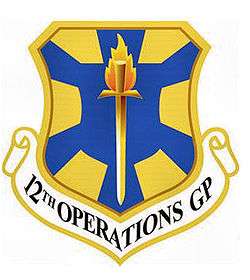



.png)
.svg.png)
.svg.png)
.svg.png)
